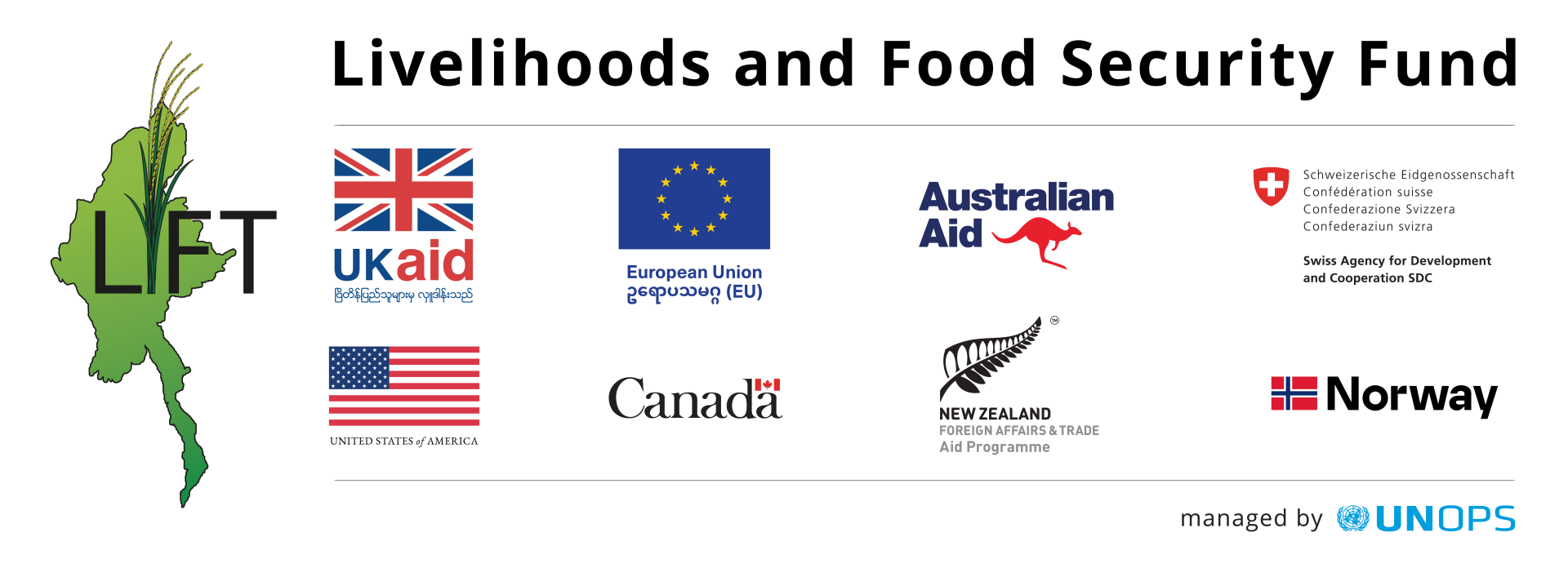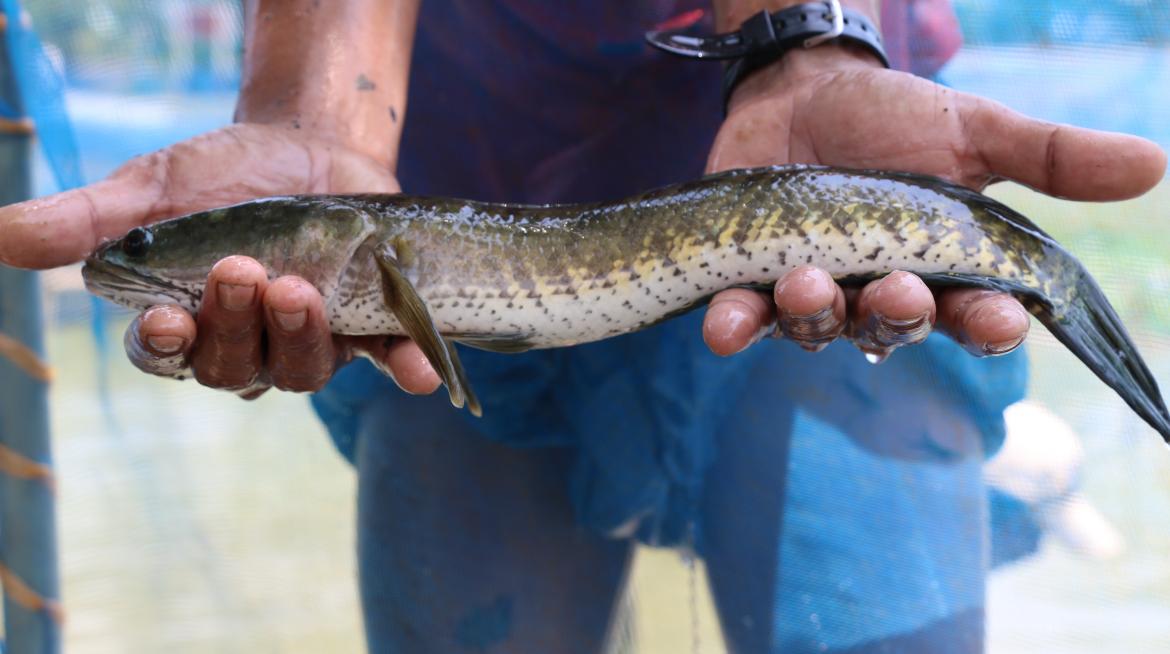
Dr Manjurul Karim, Programme Manager and scientist, is leading an aquaculture project funded by LIFT at WorldFish. He has 25 years of aquaculture development experience and has published more than 50 articles on aquaculture and rural development.
Dr Manjurul holds a Ph.D. in integrated agriculture-aquaculture from the Institute of Aquaculture, University of Stirling, UK and a Masters of Science from the Department of Fisheries, Biology and Genetics, Bangladesh Agricultural University, Mymensingh, Bangladesh.
--------------------------------------------------------------------------------------------------------------------------------------------------------------------------------------------------------------------
In Myanmar, 90 per cent of aquaculture is in inland freshwater ponds in the Ayeyarwady Delta. Over the last 10 years, farmed fish output from this region grew by 250 per cent, driven by an increase in production yields and the number of ponds (Feed the Future 2015).
But growth has been disproportionate, resulting in a highly concentrated aquaculture sector. Government policy focuses on large commercial operators, with little consideration of the smallholder sector. More than 50 per cent (approximately 45,705 ha) of the total pond area in the Delta represents very large farms (>100 ha; including a number of vertically integrated companies) that are linked to markets. In comparison, around 200,000 subsistence fish farms (average pond size of 250 m2) exist in the delta. Often, these are underutilised and derelict, despite having significant potential to contribute to the incomes, nutrition and markets of rural populations.
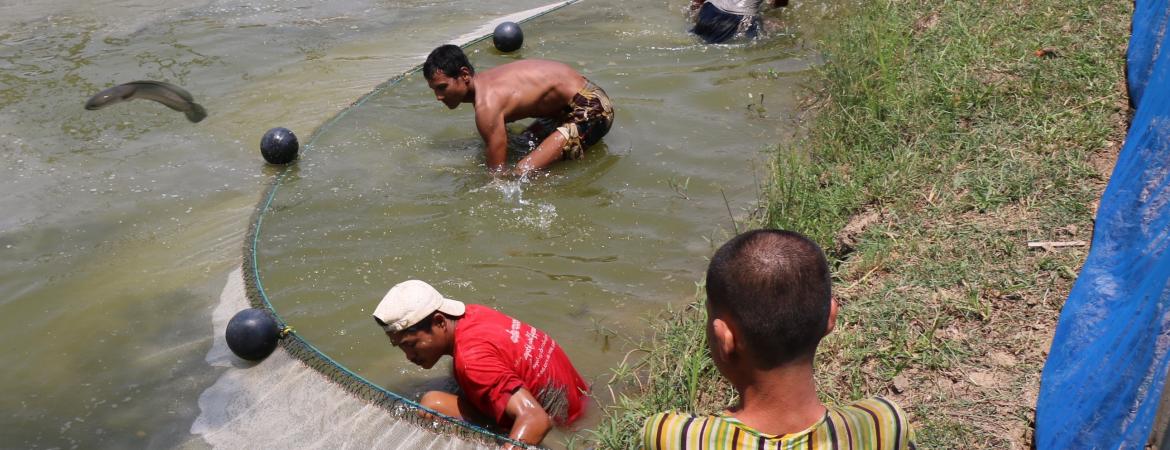
Barriers for smallholder farmers
Development of the smallholder fish farming sector is limited by two barriers. First, government regulations prevent the conversion of paddy land to fish ponds. This policy is intended to emphasise rice production, but it consequently stifles the development of aquaculture. Some farmers choose to circumvent the regulations, while in other areas farmers are unable to do so because the regulations are strictly enforced. Second, insecure land tenure dissuades fish farmers from renting privately-owned land to build fish ponds, a common practice in many other Asian countries. In response, many households have constructed small backyard ponds to grow fish for home consumption.
Irrigation channels: an untapped opportunity
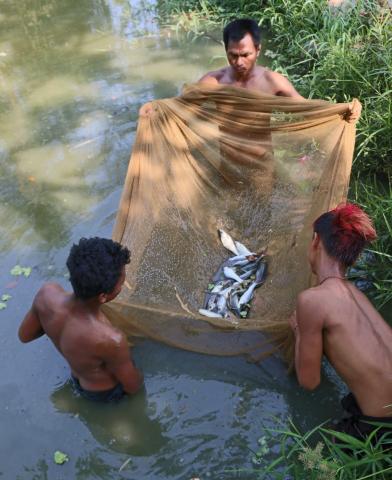
In the search for ways to engage smallholders, a new avenue for fish farming has emerged: irrigation channels. Known in the local language as chan myaung, these channels (both freshwater and brackish water) crisscross the Ayeyarwady Delta, providing irrigation water for plants and trees grown on the embankments. The small channels, running alongside rice fields, are owned by the farmers whose land they flow through. Many of the channels are already populated to some extent with wild fish such as catfish, snakehead, tilapia, eels and climbing perch, which some farmers catch and eat, proving that fish can live and survive in these water bodies. To harness this opportunity, the LIFT-funded Promoting the sustainable growth of aquaculture in Myanmar (MYFC) project has started producing fish seed (or fertilised fish eggs) for use in the irrigation channels and training farmers in aquaculture.
Communities choose to farm high value fish
To first determine the preferred fish species for farming in the irrigation channels, the project consulted local communities. Feedback from a participatory community appraisal exercise showed a preference for high value and popular fish with good earning potential in the local market. In Myanmar, the most commonly farmed fish is rohu, an indigenous carp species accounting for 70 per cent of farmed output. Because it is widely available, it fetches a low market price. In comparison, native species such as climbing perch, catfish and snakehead are available mainly from wild sources in small quantities, and as such sell for higher prices. For example, climbing perch can attract market prices more than double that of traditionally-farmed rohu.
Need for seed
To provide the fish seed needed by chan myaung owners, the project established a breeding programme for climbing perch (anabus testudineus) at a Department of Fisheries-owned hatchery in February 2016. This is the first time this seed has been produced in Myanmar; in July 2016, catfish and snakehead seed will also be produced. Over 500,000 climbing perch larvae have been produced and are being distributed to chan myaung owners and pond farmers starting early June. The chan myaung owners are rearing these fish in netted areas in the shady irrigation channels, which have been cleared of any predators.
Targeting poor households for training
Beyond producing seed, the project is providing training to more than 500 farmers on how to farm fish including climbing perch and other potential species. Initially the MYFC project will target poorer households to help meet their subsistence needs, before gradually assisting the farmers to commercialise. The project recommends that farmers bring the resource under aquaculture for one production cycle (six months), before resting the resource for six months, to ensure there is no negative impact on the environment.
The results of this initiative will be available by the end of 2016. If fish can successfully be reared in the chan myaung by smallholders, WorldFish will work with the Department of Fisheries and private sector to establish a market for the seed and extend the practice throughout the Ayeyarwady Delta.
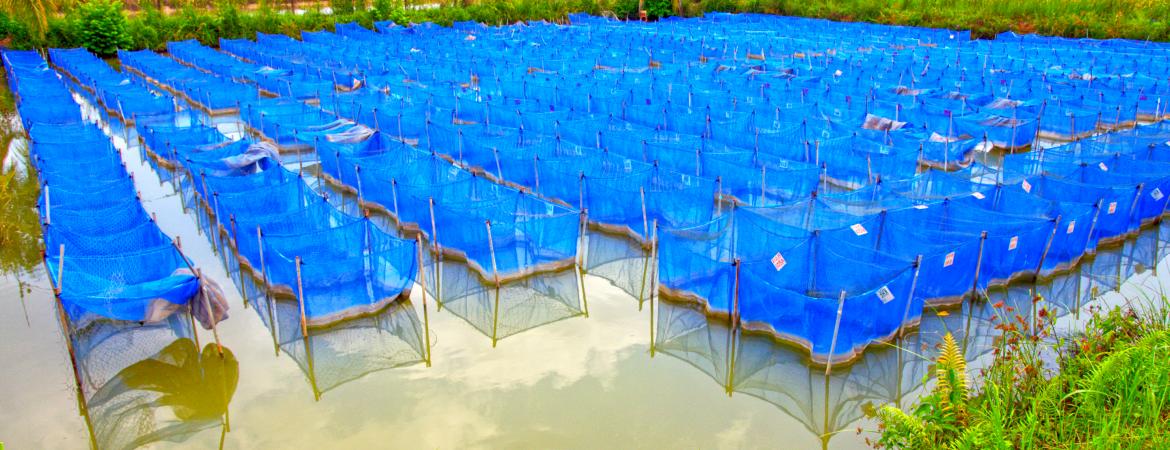
Small channels, big benefits
The potential of the irrigation channels to engage smallholders in fish farming is huge. Thousands of irrigation channels already exist in the Delta, and fish farming is attractive to many smallholders because of the potential high returns from fish production. Now, irrigation channel owners, can earn extra income and access nutritious fish from aquaculture, a sector previously off limits to them. By using fish bred for farming, channel owners can produce fish of a higher quality and get a more consistent harvest.
Fish, as the leading source of animal protein in Myanmar and vital source of micronutrients, is important for domestic food security. Currently, fish farming accounts for around 20% of domestic fish consumption (Feed the Future 2015). By increasing aquaculture output, the country will benefit from improved food and nutrition security. In addition, it will reduce overfishing of wild climbing perch, of which stocks have dwindled in recent years.
Engaging smallholders is good for all
Smallholder farmers have a very real and important role to play in aquaculture in Myanmar. Finding ways to help the resource-poor overcome challenges of the unfavorable policy environment will help subsistence households participate in fish farming, and create positive outcomes for families, communities and the country as a whole.

